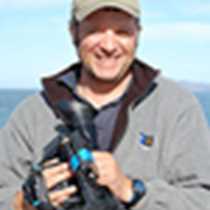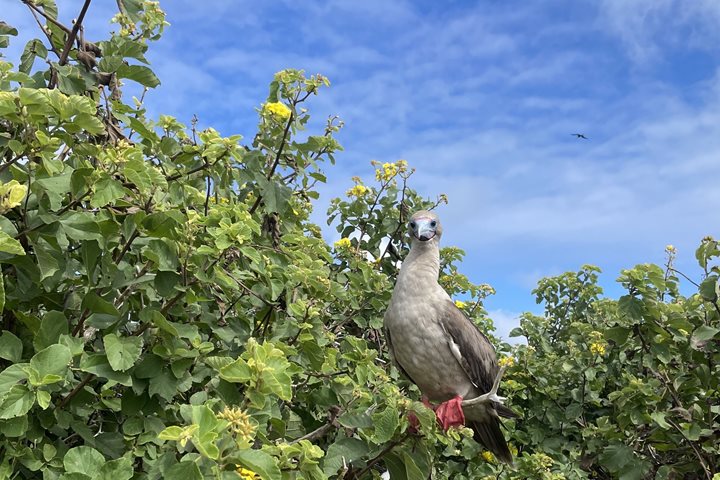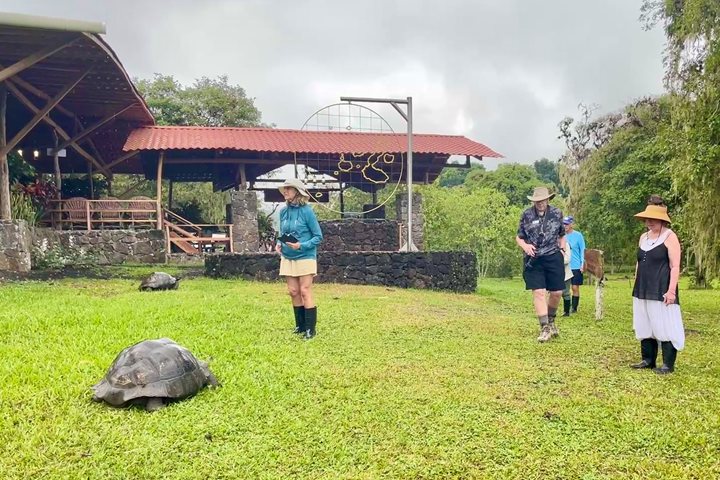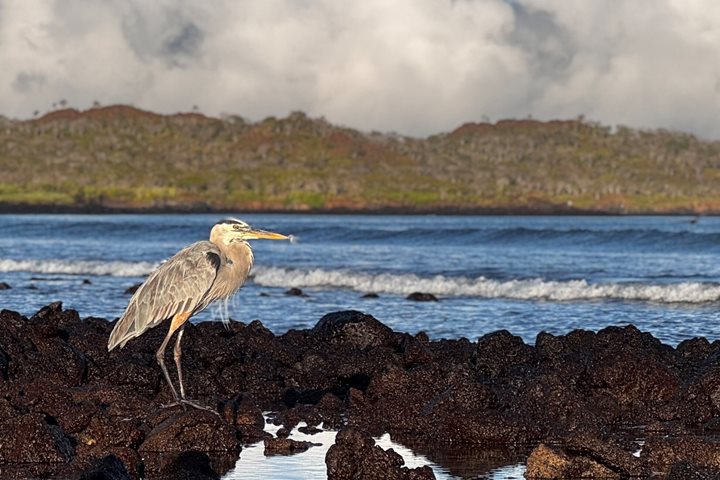Today onboard National Geographic Endeavour II we visited Genovesa Island, a horseshoe shaped island located in the northeastern region of the Galapagos archipelago. The isolation of this island has created the perfect conditions for sea birds, currently they are the most numerous inhabitants of the place. This island is certainty a bird paradise, we walk among hundreds of Nazca boobies, swallow tailed gulls, frigate birds and the very colorful red-footed boobies. The entire site is a nesting ground for all of its creatures. It was amazing to see all the red-footed boobies and Nazca boobies’ nests, eggs, and chicks just being taken care of by their parents. We also spotted a short ear owl -- this top predator was hunting a Galapagos petrel on the cliff. We patiently watched the hunting process until the owl got a prey and flew next to us to eat it. All these magnificent birds together with the very contrasting landscape make it one of the most fabulous places on earth. Today’s images will remain in our hearts for the rest of our lives. What a special way to end our expedition around this enchanted archipelago aboard National Geographic Endeavour II.
5/29/2025
Read
National Geographic Gemini
Genovesa Island
Genovesa is considered one of the Galapagos crown jewels, and today it was showing off all of its splendor. Immediately after breakfast we put on our sturdy shoes and set out to explore Prince Philip’s Steps. This area is known for opportunities to observe not only large colonies of nesting Nazca and red-footed boobies, but maybe, just maybe, the short-eared owl which exhibits diurnal behavior on this island. After this walk we got ready for a dip in the Pacific Ocean and snorkeling along the inner coast of this caldera. The afternoon was equally amazing as we disembarked to explore Darwin Bay, along a short and easy trail that was packed with wildlife. Here we observed not only nesting frigatebirds, red-footed boobies, and Nazca boobies, but also a few yellow-crowned night herons. It was another incredible afternoon in the Galapagos Islands.









